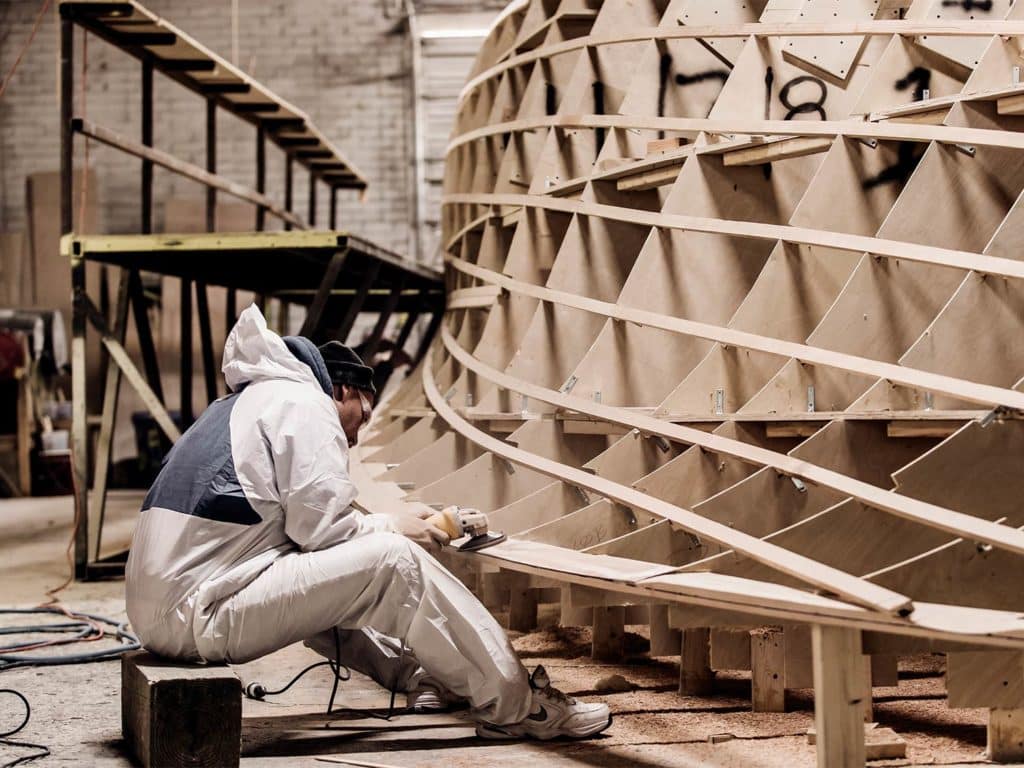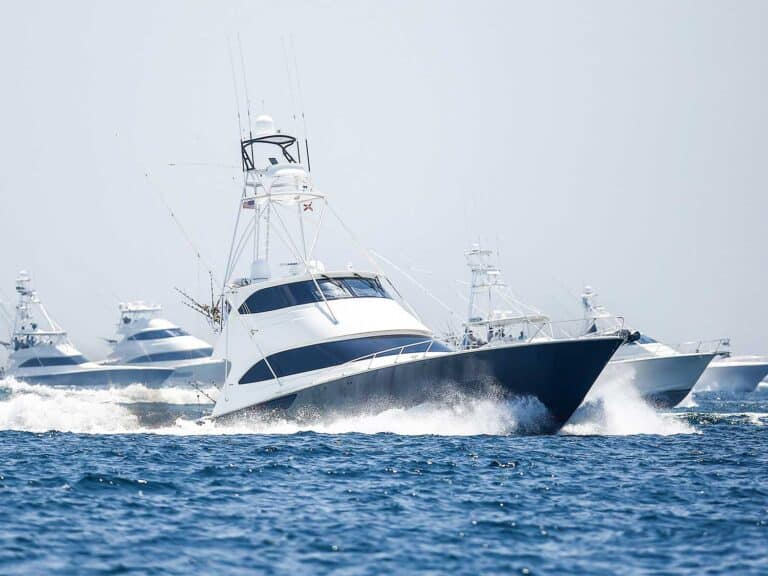
Boating businesses have long faced the challenges of replenishing an aging demographic of customers, but now they are also grappling with the critical task of sustaining and growing their own workforces. Customer demand from all market segments has been historic, and boat sales have soared throughout 2020 and 2021, but throughout this turbocharged boom, overwhelmed manufacturers are struggling to keep up.
In most cases, waiting lists for new boats and refit work have grown shockingly long. Demand stemming from the pandemic not only caught supply chains flat-footed, but it has also brought attention to a growing void in the supply of skilled and unskilled laborers.
Stunted Growth
During this spike, difficulties in hiring and keeping employees handicapped many builders and boatyards. “We have more inquiries for service and refit work than we’re able to take on with our current workforce,” reports JB Turner, president of Front Street Shipyard in Maine. “Our new-build division is equally strained; we’re working hard to meet the delivery dates for boats currently under construction. That also means we must manage the expectations of new clients hoping to start new builds.”
It’s a precarious position for an industry that relies on service and support to keep their customers on the water. “It’s never been harder to find skilled tradespeople,” says John Fitzgerald, president of Saunders Yachtworks in Orange Beach, Alabama. “This is not a new challenge, though. It’s one I’ve been dealing with since I started in human resources over 20 years ago.”
Watch: Learn to rig a belly strip teaser.
The high-wire act of delivering first-class service to discerning customers is old hat for these industry vets, but the amount of dexterity required has been multiplied in this time of unprecedented demand. Stacie Johnson, human resources manager at Jarrett Bay Boatworks, explains: “When we have workforce deficiencies, timelines need to be extended, because whether building or servicing boats, there just isn’t the staff required to complete projects at the same rate we used to. There is a ripple effect across businesses if we can’t get projects done in a quick and timely manner.”
A Look at the Workforce
A recent Boats Group marketing study reported that 56 percent of boat shoppers had no prior evidence of boat ownership. This means that more than half of all prospective boat buyers are new to the market, and perhaps also new to boating. But has this swell of enthusiasm for boating and fishing permeated the younger generations to also consider careers in the boating industry? It’s too soon to tell, some yachting executives say. According to Drew Davala, executive vice president of Viking Yachts, millennials and Gen Z are not demonstrating a willingness to embrace and learn skilled trades. Davala also points to a shift in schools’ focus: “For decades, the model of a high school partnering with its local vocational technical school worked very well for our industry. But lately, there has been a shift in these schools to teach more technology-oriented curriculums instead of the traditional trades we need to sustain our industries. This needs to change for the future.”
Do you remember building and racing wooden cars when you were in shop class or the Cub Scouts? Well, imagine your child learning to design, modify and race their car via simulation software, and perhaps never picking up a block of wood, a saw or sandpaper. That’s a microcosm of where we are.
By many accounts, the pandemic seems to have flipped a spotlight on this weakness in generational experience and hands-on interests. While millions of Americans and their employers have shifted to work-from-home arrangements, boatbuilders and shipyards don’t have the luxury of operating their businesses virtually. All these companies are seeing a small but steady and successful stream of interest in engineering and management careers from university maritime programs, but that’s not the problem. It’s the interest in skilled—and even unskilled—labor positions that has tanked.
Granted, yachts are getting more complex and electronically controlled every day, but you still need crewmembers willing to crawl into those tight spaces and rub against fiberglass if you want to be in the business of building or repairing boats.
How They’re Coping
As an executive who worked his way up through the Saunders HR department, Fitzgerald reiterates that there’s no silver bullet to these challenges. “Hiring success requires a sustained effort and investments in several areas,” he says. For most companies, this is a mixture of recruiting skilled workers from other industries, encouraging and investing in the development of local vocational-training programs, and copious amounts of on-the-job training. A mechanic, carpenter or electrician from other industries can certainly be taught to specialize in marine applications. “Even if a candidate doesn’t have experience in the marine industry, if they have the skillset, we can train them to our specific processes and procedures at Jarrett Bay,” Johnson says.
Fitzgerald echoes those sentiments and looks favorably on encouraging young people to embark on a career in the trades, while also recruiting candidates with the right attitude and curiosity. When one lacks skills, it’s all about aptitude.
Most builders have several forms of on-the-job training and have also welcomed opportunities to pay for employees’ outside courses and certifications. Davala says that Viking has had seven different trade apprentice programs since 1988 and has always placed a strong emphasis on OJT. In fact, much of the company’s production-management team came up through its vocational-training programs.
Read Next: Meet Viking president and CEO Pat Healey in our exclusive interview.
Finding new employees isn’t the only challenge—companies also must work hard to retain them. Large organizations such as Viking may be at an advantage and have been diligent in offering hiring incentives and attractive benefits such as on-site medical care and four-day workweeks for the factory/labor shifts.
Fitzgerald points out that the pandemic also may have gotten more Saunders employees thinking about early retirement. And while he’s happy those employees are able to consider it, the company still recruits continuously, despite the diverse age of its workforce.
On-the-job training, employee incentives, healthcare, relocation expenses: No wonder those new-boat price tags keep climbing. Add in supply-chain issues, raw-material shortages and inflation, and you realize that these builders are dealing with a long list of challenges, even in a boom. Fortunately for the industry, there does appear to be a consensus on the first step in addressing these difficulties: We must communicate to more people that skilled labor can afford them a secure and fulfilling career that they’ll be proud of.
This article originally appeared in the February 2022 print issue of Marlin.







